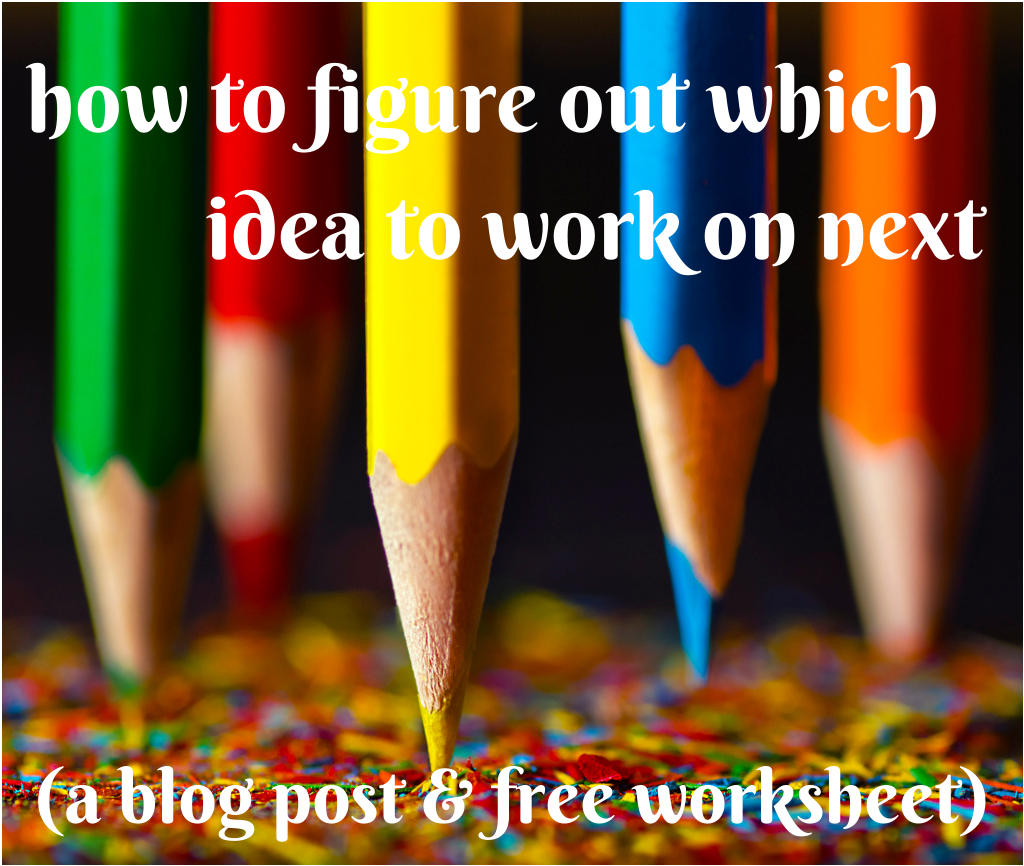

One of those problems-that’s-kinda-good-to-have is the problem of too many ideas.
On the one hand, it’s something of a blessing to have all of these ideas zipping around your head like kittens with a ball of string. On the other hand, it can also be headache inducing and give you the paralyzing fear of not knowing which idea to start on next. If you’re paralyzed, you’re not taking action; and if you’re not taking action, those ideas don’t end up doing any good.
How do you pick one idea to start on next?
For those of us who have this problem, it can be incredibly difficult to put one on the backburner. We want to work on everything at the same time and create amazing things, but that’s not always possible (and can often just lead to not finishing any of the ideas you’re working on – especially if you’re not a meticulous planner).
The secret is to look to your priorities to show you which idea to work on next. Which, of course, is fairly obvious and sounds like a great idea, but can be hard to carry out in practice. So instead of just telling you that and leaving you hanging, I’m going to show you a process for figuring out what, exactly, your priorities are right now, and how that fits in with the ideas running around in your head.
You’ll need a sheet of paper. And a pen. (Or you can go ahead and download + print out the worksheet I made for you, before you get started. Though I suppose you’d still need paper and a pen.)
Write down all of your current ideas that you’re having trouble choosing between. You don’t have to write down the idea in intricate detail, but enough so that upon referring back to this, you’ll know exactly which idea you were speaking of. After you write down all of your ideas, go back through, and for each idea write down two things:
- What you’ll get from working on the idea and bringing it to fruition. Money? Pride? Fun? Respect? Two or three of these? Whatever it is, write it down.
- An approximate estimate for how long it will take you to complete this idea. Be realistic, but try not to give yourself too much wiggle room. Think about your current and upcoming commitments, how much free time and energy they’ll leave you, and how flexible they are.
After you finish that, set it aside.
We’re going to zoom out now. Think about what you want to be doing, how you want to feel, and what you want to have in the next one, three, and six months. (Otherwise known as your goals – but thinking of it in these terms can bring things into super-clear focus.) Write this down, in detail.
Look at what you wrote down, and pick out the common threads – usually there will be two or three. These are your top priorities for the next several months. Now, keeping these priorities in mind, skim back over your answers for what you’ll get from working on each idea. And then figure out which idea matches best with your current priorities – and can be completed within the next 1-6 months. If there’s more than one idea that suits the requirements, choose the one that you’re most excited about, or that you can finish first – this’ll build momentum that can transfer over into working on your other ideas.
In the meantime, you need to do something with the ideas that you aren’t working on at the moment.
Part of the reason we can have such an inordinately hard time choosing one idea to work on is that we feel that by doing so, we’re abandoning the other ideas. If you do something that ensures you can come back to those other ideas later, you’re a lot more likely to be able to commit to working on this one idea for now. The best way to do this is to just take your descriptions of the ideas that you’ve already written and store them somewhere – whether online or off. They can be the start of your idea garden, and you can add new ideas as you come up with them.
If you’d like a handy-dandy worksheet to walk you through this process, then you’re in luck – I made one just for you. Download it here.
